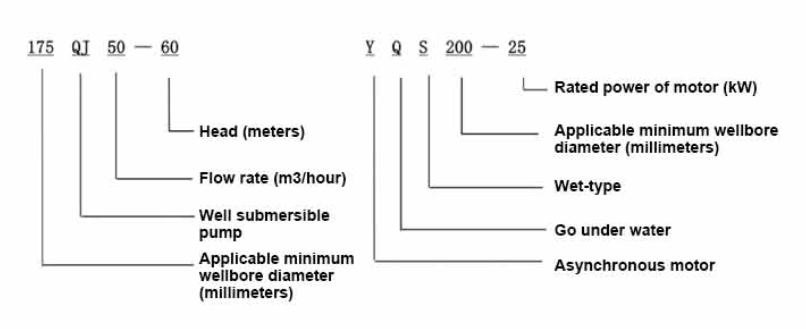Nov . 09, 2024 19:24 Back to list
Steps to Successfully Open and Maintain a Submersible Pump
How to Open a Submersible Pump A Step-by-Step Guide
Submersible pumps are widely used in various applications, ranging from draining flooded basements to irrigation in agriculture. They are designed to operate while submerged in fluid, making them efficient for moving water from deep wells or ponds. However, over time, these pumps may require opening for maintenance or repairs. This guide will walk you through the process of opening a submersible pump safely and effectively.
Safety First
Before beginning any work on a submersible pump, safety should always be your top priority. Ensure that you have the following safety gear
- Safety goggles To protect your eyes from debris and fluid. - Work gloves To protect your hands from cuts and sharp edges. - Non-slip footwear To prevent slipping when working in wet conditions. - Dust mask or respirator If you're dealing with harmful vapors or dust.
Make sure to switch off the power supply to the pump at the circuit breaker to avoid electrical hazards.
Gather Your Tools
Having the right tools on hand will make the process smoother. You may need
- A socket wrench set - A screwdriver set (both flathead and Phillips) - Pliers - A utility knife - A rubber mallet - A bucket or container for any remaining fluid
Step-by-Step Process to Open a Submersible Pump
1. Preparation Disconnect the power supply to the pump. It's crucial to ensure that there is no electricity flowing to the pump to avoid electric shock. If your pump is connected to a float switch, make sure to disconnect that as well.
how to open a submersible pump

2. Remove the Pump from the Well or Basin Gently pull the pump from its location. If it is stuck, do not force it out; instead, check for any obstructions or debris. If necessary, use a pipe wrench to carefully loosen it. Be cautious about damaging the piping or well casing.
3. Drain Remaining Water Once the pump is out, place it in a bucket to catch any residual water. Allow the pump to drain completely before you start disassembling it. This step will keep your work area clean and safe.
4. Unscrew the Pump Housing Using your socket wrench or screwdriver, slowly remove the screws or bolts that hold the pump housing together. Depending on your pump model, you may need to remove screws from both the top and bottom sections of the pump.
5. Carefully Separate the Housing With all fasteners removed, gently pry apart the housing halves. If the housing is stuck, tap it lightly with a rubber mallet. Be cautious not to apply excessive force, as this could damage the internal components.
6. Inspect Internal Parts Once removed, carefully examine the impeller, motor, and other components for signs of wear or damage. Look for clogs or debris that could be causing poor performance. If you notice any damaged parts, you will likely need replacements.
7. Clean the Components Use a soft brush and a mild cleaning solution (if necessary) to remove any buildup or debris from the internal parts of the pump. Make sure everything is dry before reassembly.
8. Reassemble the Pump Once cleaned and inspected, reassemble the pump by reversing the disassembly steps. Ensure that all screws and bolts are tightened securely to prevent leaks when reinstalled.
9. Reconnect and Test the Pump After reassembling the pump, it’s time to reconnect it to the power supply. Check all connections, including the float switch. Turn the power back on and test the pump to ensure it is functioning properly.
Conclusion
Opening a submersible pump for maintenance can seem daunting, but following these steps will help you complete the task safely and efficiently. Regular maintenance can extend the life of your pump and ensure it operates at peak efficiency. If you encounter any major issues beyond your skill level, don't hesitate to seek professional help. Remember, safety and proper care are key to maintaining your submersible pump effectively.
-
Submersible Water Pump: The Efficient 'Power Pioneer' of the Underwater World
NewsJul.01,2025
-
Submersible Pond Pump: The Hidden Guardian of Water Landscape Ecology
NewsJul.01,2025
-
Stainless Well Pump: A Reliable and Durable Pumping Main Force
NewsJul.01,2025
-
Stainless Steel Submersible Pump: An Efficient and Versatile Tool for Underwater Operations
NewsJul.01,2025
-
Deep Well Submersible Pump: An Efficient 'Sucker' of Groundwater Sources
NewsJul.01,2025
-
Deep Water Well Pump: An Efficient 'Sucker' of Groundwater Sources
NewsJul.01,2025
-
 Submersible Water Pump: The Efficient 'Power Pioneer' of the Underwater WorldIn the field of hydraulic equipment, the Submersible Water Pump has become the core equipment for underwater operations and water resource transportation due to its unique design and excellent performance.Detail
Submersible Water Pump: The Efficient 'Power Pioneer' of the Underwater WorldIn the field of hydraulic equipment, the Submersible Water Pump has become the core equipment for underwater operations and water resource transportation due to its unique design and excellent performance.Detail -
 Submersible Pond Pump: The Hidden Guardian of Water Landscape EcologyIn courtyard landscapes, ecological ponds, and even small-scale water conservancy projects, there is a silent yet indispensable equipment - the Submersible Pond Pump.Detail
Submersible Pond Pump: The Hidden Guardian of Water Landscape EcologyIn courtyard landscapes, ecological ponds, and even small-scale water conservancy projects, there is a silent yet indispensable equipment - the Submersible Pond Pump.Detail -
 Stainless Well Pump: A Reliable and Durable Pumping Main ForceIn the field of water resource transportation, Stainless Well Pump has become the core equipment for various pumping scenarios with its excellent performance and reliable quality.Detail
Stainless Well Pump: A Reliable and Durable Pumping Main ForceIn the field of water resource transportation, Stainless Well Pump has become the core equipment for various pumping scenarios with its excellent performance and reliable quality.Detail
